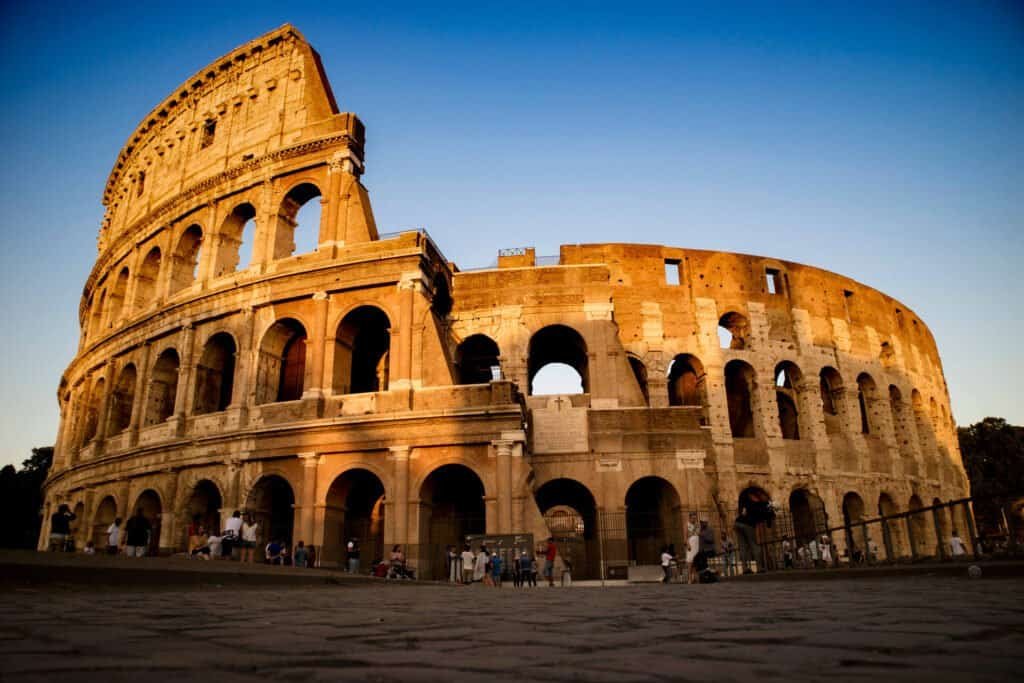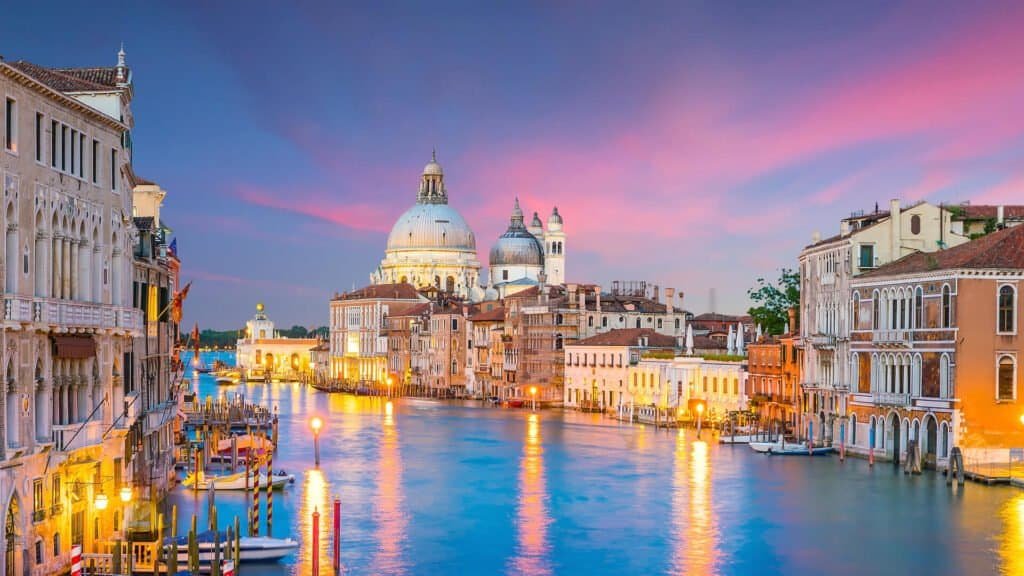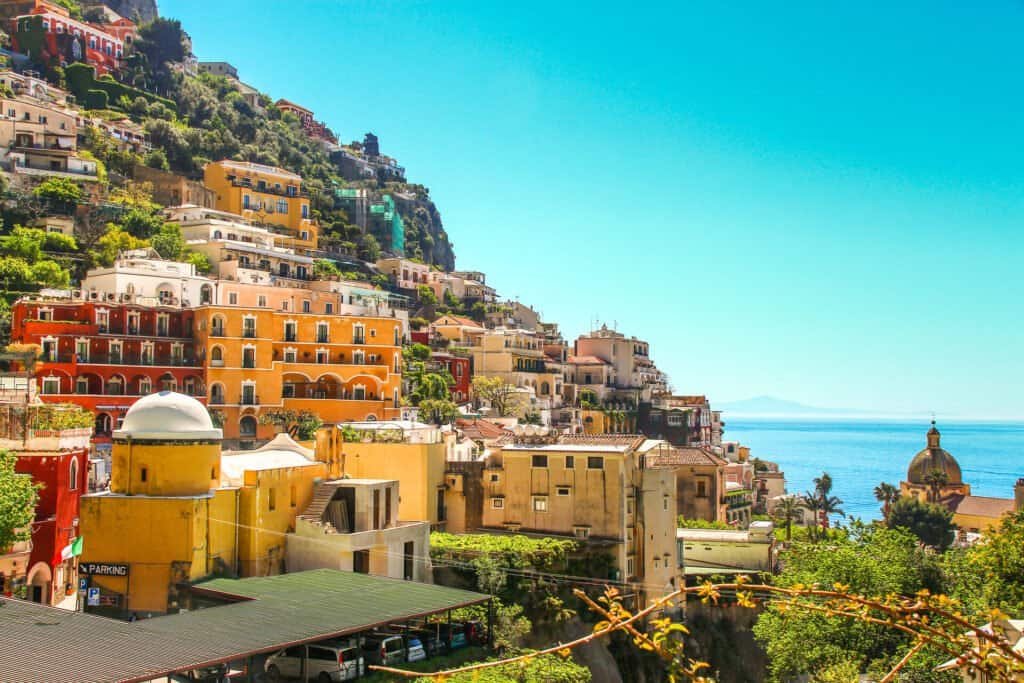Introduction
What Makes Italy Fascinating?
Italy is a fascinating country for many reasons. It has a rich history and culture spanning over 3,000 years. Italy was the center of the Roman Empire and the birthplace of the Renaissance, which shaped European and world civilization. Even today, Italy’s culture, art, food, fashion, and landscapes continue to captivate people worldwide.
- Introduction
- Italy's Unique Landmarks and Attractions
- Italian Culture and Traditions
- Italy's Influence on the World
- Exploring Italy's Regions
- Conclusion
- People also ask
- Q: What are some interesting facts about Italy?
- Q: What are some fun and interesting facts about Italy?
- Q: What are some world heritage sites in Italy?
- Q: Which city in Italy is known for its fashion?
- Q: What is the significance of the Italian flag?
- Q: Where can you find the famous Trevi Fountain?
- Q: What is the connection between Italy and wine?
- Q: What is the smallest country in the world and where is it located?
- Q: What are some interesting places to visit in Italy?
- Q: What are some fun facts about Italy's cuisine?
One thing that makes Italy so intriguing is its diversity. Each of Italy’s 20 regions has its own unique identity, dialects, cuisine, art, and architecture. This diversity comes from the different tribes and civilizations that inhabited and ruled the Italian peninsula over the centuries, including the Etruscans, Greeks, Arabs, Normans, among others.
Italy also boasts some of the world’s most iconic landmarks and attractions – from the Colosseum in Rome to the canals of Venice. These sites offer glimpses into Italy’s rich history. Additionally, Italy has the largest number of UNESCO World Heritage Sites in the world, further highlighting its immense cultural legacy.
The Rich Cultural Heritage of Italy
Italy has an extraordinarily rich cultural heritage spanning over 3,000 years of art, architecture, music, literature, philosophy, science, and technology. As the epicenter of the Roman Empire and birthplace of the Renaissance, Italy profoundly shaped Western civilization.
Italy has more UNESCO World Heritage sites than any other country on Earth. These landmarks – like the Colosseum, Venice canals, Pompeii – offer glimpses into the many great civilizations that existed on the Italian peninsula. They tell the story of Italy’s cultural achievements.

Italy also gave birth to iconic cultural figures who changed the world. The artistic genius of Leonardo da Vinci and Michelangelo, the poetic mastery of Dante, the operatic talents of Verdi – these Italians left an immense legacy still felt today.
From ancient Rome’s groundbreaking systems of law, governance and engineering to Renaissance masterpieces like the Mona Lisa, Italy has contributed greatly to the human experience. This helps explain its enduring appeal to millions of visitors captivated by its living culture.
Italy’s Unique Landmarks and Attractions
World-Famous Sites in Italy
Italy is home to many world-famous sites and attractions that encapsulate its history, art, architecture, and culture. Some of these iconic Italian landmarks include:
- The Colosseum in Rome – This massive ancient amphitheater could hold up to 80,000 spectators. Gladiator contests and public spectacles were held here during the Roman Empire.
- The Canals of Venice – These winding canals lined with Gothic, Byzantine, and Renaissance buildings make Venice an architectural wonder.
- The Leaning Tower of Pisa – This famous bell tower is a testament to Italian artistry despite its accidental tilt.
- Pompeii – This ancient Roman city was tragically buried by volcanic ash in 79 AD, leaving an incredible archaeological record of daily life in the empire.
- The Vatican & St. Peter’s Basilica – The popes have resided in this independent city-state for centuries, where St. Peter’s stunning Renaissance basilica also stands.
- The Duomo of Florence – The magnificent cathedral with its iconic red-tiled dome towers over the birthplace of the Renaissance.
With over 50 UNESCO World Heritage sites, Italy offers visitors glimpses into many great moments of human achievement through the ages.
Italy’s Contribution to World Heritage
With over 50 UNESCO World Heritage Sites, Italy has contributed immensely to global culture and history. In fact, Italy has the most World Heritage Sites of any country on Earth – for good reason.
As the heart of the Roman Empire and birthplace of the Renaissance, Italy saw tremendous innovations in architecture, art, engineering, and city planning over the millennia. The ingenuity behind Roman aqueducts, roads, and structures influenced civilizations for ages. Meanwhile Renaissance architects pioneered techniques still used today.
Beyond engineering feats, Italy gifted the world beloved cultural treasures – the operas of Verdi, Michelangelo’s David and Sistine Chapel, Dante’s Divine Comedy. Even Italy’s stunning landscapes, like the Amalfi Coast and Dolomites, have earned UNESCO recognition.
Thanks to this epic history, visitors to Italy can explore everything from ancient ruins to medieval castles to Baroque churches. They reveal the many great civilizations that existed on the Italian peninsula and their lasting impact on our shared human legacy.
Italian Culture and Traditions
Italian Cuisine and Culinary Delights
Italian cuisine offers one of the most beloved and influential culinary traditions in the world. Its history stretches back to ancient Rome, while each region of Italy also developed signature dishes reflecting local agriculture and customs.
Today, staples like pasta, pizza, risotto, and gelato are icons of Italian cooking. Yet every locale adds its specialties, from seafood risottos in Venice to eggplant parmesan in Naples. The simplicity of quality ingredients – tomatoes, olive oil, Parmigiano – makes Italian food universally appealing.
Mealtimes in Italy are treated as sacred occasions for enjoying food and company. The ritual of the Italian dinner table promotes savoring delightful flavors while connecting with loved ones through conversations that can last hours!
Beyond technique and ingredients, Italian food offers a model of quality over quantity, simplicity over complexity. Meals celebrate seasonal freshness and regional authenticity – values still influencing chefs worldwide today.
The Artistic Legacy of Italy
Italy has an artistic legacy like no other, having pioneered artistic techniques and movements that profoundly shaped Western visual culture. Italian art and architecture reflects the rich history of the Italian peninsula spanning ancient Rome, the Catholic Church, and the Renaissance.

In sculpture, Italian artists like Michelangelo created sublimely beautiful marble figures and carvings that remain iconic today. Renaissance painters like Leonardo da Vinci and Raphael advanced techniques like sfumato, linear perspective, and chiaroscuro while depicting religious and humanist themes.
Architecturally, Italy is a living museum. The Romans engineered awe-inspiring structures like the Pantheon and Colosseum. Later Italians designed magnificent cathedrals, palaces, and public squares, making the country a paradise for architecture buffs.
Centuries later, generations still find inspiration, beauty, and meaning in the Sistine Chapel’s frescoes or a Verrocchio bronze. Even filmmakers and designers emulate Italian art’s use of light and composition. That creative spirit remains Italy’s great gift to the world.
Italy’s Influence on the World
Italy’s Global Impact on Food, Art, and Culture
As a cultural superpower, Italy has tremendously influenced global food, art, architecture, and customs
As a cultural superpower, Italy has tremendously influenced global food, art, architecture, and customs. Italian cuisine remains beloved worldwide for staples like pizza, pasta, and gelato that have become globalized. Italian cooking techniques emphasizing quality ingredients and regional traditions also set standards adopted by chefs internationally.
In visual arts, Italian artistic innovations around painting, sculpture made during the Renaissance remain deeply admired and studied today. The harmonious proportions, humanism, and attention to detail found in works by Michelangelo and da Vinci established principles emulated by artists for centuries since.

Italy’s architectural legacy is also unmatched. The ancient Romans pioneered engineering feats like domes and aqueducts now replicated globally. Italy’s churches, cathedrals, villas and palaces offer stunning examples of design principles around symmetry, geometry, and spatial harmony. These continue inspiring architects building everywhere from American suburbs to Asian cities.
Beyond the concrete influence, Italy has also exported an enviable lifestyle and culture revolving around family, quality craftsmanship, regional traditions, and slowing down to enjoy life’s beauty. These values deeply resonate with people worldwide, further fueling Italy’s appeal and clout.
Italy’s Contributions to Science, Technology, and Fashion
Beyond art and food, Italy has made wide-ranging contributions to science, technology, and fashion trends. Italian scientists were trailblazers in physics, astronomy, medicine, and mathematics over the centuries. Galileo’s refinement of the telescope and experiments with gravity, along with da Vinci’s explorations of human anatomy, mechanics and nature marked great leaps forward.
Modern Italy carried on this innovative spirit. Enrico Fermi pioneered nuclear reactor development, while Antonio Meucci devised early telephone prototypes. Italian research now leads in fields like renewable energy, automation, and health tech.
In fashion, Italy remains synonymous with style and glamor. Since the 1950s, Italian houses like Gucci, Prada, Versace and Armani have dictated global trends. Italian fashion follows principles similar to cooking – quality materials and workmanship combined with passion and creativity. This formula produces bold, elegant clothes reflecting la dolce vita – the sweet life.
Across these spheres, Italy has repeatedly demonstrated how dedication to quality, regional pride in local talents, and joie de vivre can yield innovations and beauty the whole world wishes to embrace.
Exploring Italy’s Regions
Diverse Landscapes and Regions of Italy
Italy’s 20 diverse regions each have their own culture, cuisine, dialect, and artistic heritage shaped by ancient tribes, foreign rule, agriculture, and geography over the centuries.
Northern regions like Piedmont and Lombardy offer Alpine vistas and excellent skiing, while sharing borders and traits with France, Switzerland, and Austria. Northeastern regions like the Veneto reveal Byzantine and Venetian Gothic architecture interwoven with canals and lagoons.

Central Italy conjures images of Tuscan wineries, Umbrian hill towns, and the coastlines of Emilia-Romagna. Meanwhile, southern regions dazzle visitors with Greek and Arab-influenced architecture in seaside Puglia or Sicily, while offering the best Mediterranean beaches.
Despite regional differences, all of Italy shares a national pride around food, wine, family, art and living life to the fullest. This diversity within a common cultural framework makes exploring Italy’s regions an endless adventure.
Hidden Gems and Treasures Across Italy
While Italy’s major cities and landmarks magnetize tourists, exploring off-the-beaten-path reveals the country’s hidden gems and treasures. Venturing into Italy’s sleepy small towns, mountain villages, rural landscapes and tiny islands offers visitors authentic cultural immersion and breathtaking beauty away from the crowds.
In regions like Le Marche, Abruzzo, and Basilicata, charming medieval and Renaissance towns feature local artisanal crafts and food traditions unchanged for generations. Areas like Trentino-Alto Adige offer stunning Alpine scenery dotted with ancient castles and monasteries to discover.
Italy’s islands also conceal wonders, from the Aeolian Islands’ volcanic peaks to Sardinia’s glittering beaches and archaelogical riches tracing back to the Nuragic bronze age. Even just driving Italy’s winding backroads reveals one picturesque hillside village after another to explore.
Venturing off Italy’s beaten track rewards visitors with a profound understanding of daily life, history, and culture. Here one can discover the Italy known to locals – full of charm, simplicity, natural splendor, and far fewer crowds. For travelers seeking authentic immersion in Italy’s riches, its lesser-known gems shine the brightest.
Conclusion
Reflecting on Italy’s Enduring Allure
What makes Italy such an alluring destination is its seemingly endless layers of culture, beauty and history – evident everywhere from its iconic landmarks to remote country villages. A trip through Italy traverses many past great civilizations, revealed in details like a perfect Roman arch or Gothic spire. Yet present-day Italy also delights visitors with its culture of enjoying life through vibrant arts, mouth-watering cuisine, and welcoming community.
While the years have altered landscapes and rulers, Italy maintains a devotion to celebrating what makes life meaningful – beauty, nature, creativity, faith, family. These timeless values and pleasures speak to the human spirit, making a visit to Italy feel like coming home to something essential within our shared humanity. This rare, profound feeling brings millions to Italy’s shores yearning to discover their own place in this rich cultural tapestry.
Embracing the Beauty and Diversity of Italy
At its core, Italy offers visitors the chance to embrace life’s beauty and pleasures. Its diverse landscapes, culture, and history celebrate the human capacity to create meaning through artistry, community, faith and living passionately. Nowhere else on Earth yields so many layers of civilization for travelers to uncover – often with a glass of wine and plate of pasta in hand.
From the Alps to Sicily’s beaches, fairytale villages to thriving metropolises, Italy’s contrasts reveal the richness of life’s fabric. The Italian spirit welcomes visitors to set aside maps and schedules to simply soak in the moment, whether admiring a Michelangelo sculpture or bonding with new friends over a home-cooked feast.
With so much magic, adventure and meaning to uncover, Italy promises endless rewards for travelers seeking to reconnect with the joys of being fully alive. Nowhere else makes la dolce vita – the sweet life – so tantalizingly close at hand for anyone ready to dive in.
People also ask
Q: What are some interesting facts about Italy?
A: Italy is the fifth largest wine producer in the world and is home to some of the oldest population in Europe. It is also the country where the famous Trevi Fountain is located and where the smallest country in the world, Vatican City, can be found.
Q: What are some fun and interesting facts about Italy?
A: Italy is also known for its UNESCO World Heritage sites, including the historic city of Venice, the Tower of Pisa, and the beautiful Amalfi Coast. Additionally, Italy is the birthplace of many famous figures such as Leonardo da Vinci and is where pizza and gelato were invented.
Q: What are some world heritage sites in Italy?
A: Italy is home to numerous UNESCO World Heritage sites, such as the historic centers of Florence and Rome, the archaeological area of Pompeii, and the stunning Cinque Terre coastal region.
Q: Which city in Italy is known for its fashion?
A: Milan is famous for being one of the world’s fashion capitals, alongside cities like Paris, London, and New York.
Q: What is the significance of the Italian flag?
A: The Italian flag consists of three vertical stripes of green, white, and red. These colors represent hope, faith, and charity, and are often associated with the country’s unity and independence.
Q: Where can you find the famous Trevi Fountain?
A: The Trevi Fountain, one of the most iconic landmarks in Italy, is located in the city of Rome.
Q: What is the connection between Italy and wine?
A: Italy is the world’s largest wine producer and is known for its diverse and high-quality wine regions, such as Tuscany, Piedmont, and Sicily.
Q: What is the smallest country in the world and where is it located?
A: Vatican City, the smallest independent state in the world, is located within Rome, Italy.#
Q: What are some interesting places to visit in Italy?
A: Italy offers a wide range of attractions, including historical landmarks like the Colosseum, natural wonders like the Amalfi Coast, and cultural treasures like the Uffizi Gallery in Florence.
Q: What are some fun facts about Italy’s cuisine?
A: Italy is known for its delicious cuisine, with popular dishes such as pasta, risotto, and regional specialties like Neapolitan pizza and Sicilian cannoli. The country’s culinary traditions are deeply rooted in history and local ingredients.